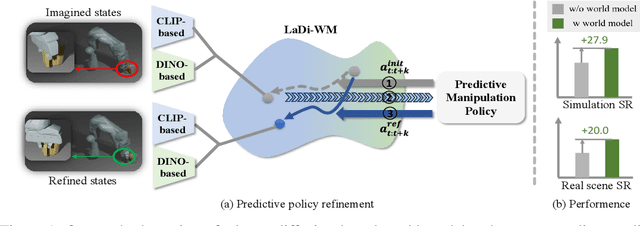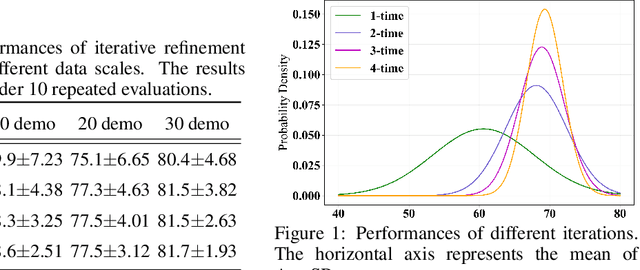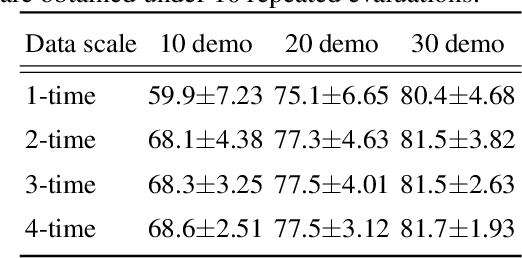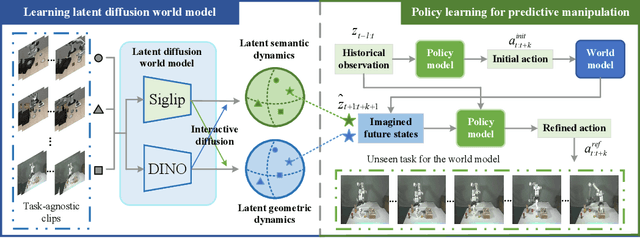Kai Xu
National University of Defense Technology
Hybrid Quantum-Classical Neural Networks for Few-Shot Credit Risk Assessment
Sep 17, 2025Abstract:Quantum Machine Learning (QML) offers a new paradigm for addressing complex financial problems intractable for classical methods. This work specifically tackles the challenge of few-shot credit risk assessment, a critical issue in inclusive finance where data scarcity and imbalance limit the effectiveness of conventional models. To address this, we design and implement a novel hybrid quantum-classical workflow. The methodology first employs an ensemble of classical machine learning models (Logistic Regression, Random Forest, XGBoost) for intelligent feature engineering and dimensionality reduction. Subsequently, a Quantum Neural Network (QNN), trained via the parameter-shift rule, serves as the core classifier. This framework was evaluated through numerical simulations and deployed on the Quafu Quantum Cloud Platform's ScQ-P21 superconducting processor. On a real-world credit dataset of 279 samples, our QNN achieved a robust average AUC of 0.852 +/- 0.027 in simulations and yielded an impressive AUC of 0.88 in the hardware experiment. This performance surpasses a suite of classical benchmarks, with a particularly strong result on the recall metric. This study provides a pragmatic blueprint for applying quantum computing to data-constrained financial scenarios in the NISQ era and offers valuable empirical evidence supporting its potential in high-stakes applications like inclusive finance.
Adaptive Spatial Goodness Encoding: Advancing and Scaling Forward-Forward Learning Without Backpropagation
Sep 15, 2025Abstract:The Forward-Forward (FF) algorithm offers a promising alternative to backpropagation (BP). Despite advancements in recent FF-based extensions, which have enhanced the original algorithm and adapted it to convolutional neural networks (CNNs), they often suffer from limited representational capacity and poor scalability to large-scale datasets, primarily due to exploding channel dimensionality. In this work, we propose adaptive spatial goodness encoding (ASGE), a new FF-based training framework tailored for CNNs. ASGE leverages feature maps to compute spatially-aware goodness representations at each layer, enabling layer-wise supervision. Crucially, this approach decouples classification complexity from channel dimensionality, thereby addressing the issue of channel explosion and achieving competitive performance compared to other BP-free methods. ASGE outperforms all other FF-based approaches across multiple benchmarks, delivering test accuracies of 99.65% on MNIST, 93.41% on FashionMNIST, 90.62% on CIFAR-10, and 65.42% on CIFAR-100. Moreover, we present the first successful application of FF-based training to ImageNet, with Top-1 and Top-5 accuracies of 26.21% and 47.49%. By entirely eliminating BP and significantly narrowing the performance gap with BP-trained models, the ASGE framework establishes a viable foundation toward scalable BP-free CNN training.
RemixFusion: Residual-based Mixed Representation for Large-scale Online RGB-D Reconstruction
Jul 23, 2025Abstract:The introduction of the neural implicit representation has notably propelled the advancement of online dense reconstruction techniques. Compared to traditional explicit representations, such as TSDF, it improves the mapping completeness and memory efficiency. However, the lack of reconstruction details and the time-consuming learning of neural representations hinder the widespread application of neural-based methods to large-scale online reconstruction. We introduce RemixFusion, a novel residual-based mixed representation for scene reconstruction and camera pose estimation dedicated to high-quality and large-scale online RGB-D reconstruction. In particular, we propose a residual-based map representation comprised of an explicit coarse TSDF grid and an implicit neural module that produces residuals representing fine-grained details to be added to the coarse grid. Such mixed representation allows for detail-rich reconstruction with bounded time and memory budget, contrasting with the overly-smoothed results by the purely implicit representations, thus paving the way for high-quality camera tracking. Furthermore, we extend the residual-based representation to handle multi-frame joint pose optimization via bundle adjustment (BA). In contrast to the existing methods, which optimize poses directly, we opt to optimize pose changes. Combined with a novel technique for adaptive gradient amplification, our method attains better optimization convergence and global optimality. Furthermore, we adopt a local moving volume to factorize the mixed scene representation with a divide-and-conquer design to facilitate efficient online learning in our residual-based framework. Extensive experiments demonstrate that our method surpasses all state-of-the-art ones, including those based either on explicit or implicit representations, in terms of the accuracy of both mapping and tracking on large-scale scenes.
Curve-Aware Gaussian Splatting for 3D Parametric Curve Reconstruction
Jun 26, 2025Abstract:This paper presents an end-to-end framework for reconstructing 3D parametric curves directly from multi-view edge maps. Contrasting with existing two-stage methods that follow a sequential ``edge point cloud reconstruction and parametric curve fitting'' pipeline, our one-stage approach optimizes 3D parametric curves directly from 2D edge maps, eliminating error accumulation caused by the inherent optimization gap between disconnected stages. However, parametric curves inherently lack suitability for rendering-based multi-view optimization, necessitating a complementary representation that preserves their geometric properties while enabling differentiable rendering. We propose a novel bi-directional coupling mechanism between parametric curves and edge-oriented Gaussian components. This tight correspondence formulates a curve-aware Gaussian representation, \textbf{CurveGaussian}, that enables differentiable rendering of 3D curves, allowing direct optimization guided by multi-view evidence. Furthermore, we introduce a dynamically adaptive topology optimization framework during training to refine curve structures through linearization, merging, splitting, and pruning operations. Comprehensive evaluations on the ABC dataset and real-world benchmarks demonstrate our one-stage method's superiority over two-stage alternatives, particularly in producing cleaner and more robust reconstructions. Additionally, by directly optimizing parametric curves, our method significantly reduces the parameter count during training, achieving both higher efficiency and superior performance compared to existing approaches.
Angio-Diff: Learning a Self-Supervised Adversarial Diffusion Model for Angiographic Geometry Generation
Jun 24, 2025Abstract:Vascular diseases pose a significant threat to human health, with X-ray angiography established as the gold standard for diagnosis, allowing for detailed observation of blood vessels. However, angiographic X-rays expose personnel and patients to higher radiation levels than non-angiographic X-rays, which are unwanted. Thus, modality translation from non-angiographic to angiographic X-rays is desirable. Data-driven deep approaches are hindered by the lack of paired large-scale X-ray angiography datasets. While making high-quality vascular angiography synthesis crucial, it remains challenging. We find that current medical image synthesis primarily operates at pixel level and struggles to adapt to the complex geometric structure of blood vessels, resulting in unsatisfactory quality of blood vessel image synthesis, such as disconnections or unnatural curvatures. To overcome this issue, we propose a self-supervised method via diffusion models to transform non-angiographic X-rays into angiographic X-rays, mitigating data shortages for data-driven approaches. Our model comprises a diffusion model that learns the distribution of vascular data from diffusion latent, a generator for vessel synthesis, and a mask-based adversarial module. To enhance geometric accuracy, we propose a parametric vascular model to fit the shape and distribution of blood vessels. The proposed method contributes a pipeline and a synthetic dataset for X-ray angiography. We conducted extensive comparative and ablation experiments to evaluate the Angio-Diff. The results demonstrate that our method achieves state-of-the-art performance in synthetic angiography image quality and more accurately synthesizes the geometric structure of blood vessels. The code is available at https://github.com/zfw-cv/AngioDiff.
BoxFusion: Reconstruction-Free Open-Vocabulary 3D Object Detection via Real-Time Multi-View Box Fusion
Jun 18, 2025Abstract:Open-vocabulary 3D object detection has gained significant interest due to its critical applications in autonomous driving and embodied AI. Existing detection methods, whether offline or online, typically rely on dense point cloud reconstruction, which imposes substantial computational overhead and memory constraints, hindering real-time deployment in downstream tasks. To address this, we propose a novel reconstruction-free online framework tailored for memory-efficient and real-time 3D detection. Specifically, given streaming posed RGB-D video input, we leverage Cubify Anything as a pre-trained visual foundation model (VFM) for single-view 3D object detection by bounding boxes, coupled with CLIP to capture open-vocabulary semantics of detected objects. To fuse all detected bounding boxes across different views into a unified one, we employ an association module for correspondences of multi-views and an optimization module to fuse the 3D bounding boxes of the same instance predicted in multi-views. The association module utilizes 3D Non-Maximum Suppression (NMS) and a box correspondence matching module, while the optimization module uses an IoU-guided efficient random optimization technique based on particle filtering to enforce multi-view consistency of the 3D bounding boxes while minimizing computational complexity. Extensive experiments on ScanNetV2 and CA-1M datasets demonstrate that our method achieves state-of-the-art performance among online methods. Benefiting from this novel reconstruction-free paradigm for 3D object detection, our method exhibits great generalization abilities in various scenarios, enabling real-time perception even in environments exceeding 1000 square meters.
Designing Pin-pression Gripper and Learning its Dexterous Grasping with Online In-hand Adjustment
May 25, 2025Abstract:We introduce a novel design of parallel-jaw grippers drawing inspiration from pin-pression toys. The proposed pin-pression gripper features a distinctive mechanism in which each finger integrates a 2D array of pins capable of independent extension and retraction. This unique design allows the gripper to instantaneously customize its finger's shape to conform to the object being grasped by dynamically adjusting the extension/retraction of the pins. In addition, the gripper excels in in-hand re-orientation of objects for enhanced grasping stability again via dynamically adjusting the pins. To learn the dynamic grasping skills of pin-pression grippers, we devise a dedicated reinforcement learning algorithm with careful designs of state representation and reward shaping. To achieve a more efficient grasp-while-lift grasping mode, we propose a curriculum learning scheme. Extensive evaluations demonstrate that our design, together with the learned skills, leads to highly flexible and robust grasping with much stronger generality to unseen objects than alternatives. We also highlight encouraging physical results of sim-to-real transfer on a physically manufactured pin-pression gripper, demonstrating the practical significance of our novel gripper design and grasping skill. Demonstration videos for this paper are available at https://github.com/siggraph-pin-pression-gripper/pin-pression-gripper-video.
MonoMobility: Zero-Shot 3D Mobility Analysis from Monocular Videos
May 17, 2025Abstract:Accurately analyzing the motion parts and their motion attributes in dynamic environments is crucial for advancing key areas such as embodied intelligence. Addressing the limitations of existing methods that rely on dense multi-view images or detailed part-level annotations, we propose an innovative framework that can analyze 3D mobility from monocular videos in a zero-shot manner. This framework can precisely parse motion parts and motion attributes only using a monocular video, completely eliminating the need for annotated training data. Specifically, our method first constructs the scene geometry and roughly analyzes the motion parts and their initial motion attributes combining depth estimation, optical flow analysis and point cloud registration method, then employs 2D Gaussian splatting for scene representation. Building on this, we introduce an end-to-end dynamic scene optimization algorithm specifically designed for articulated objects, refining the initial analysis results to ensure the system can handle 'rotation', 'translation', and even complex movements ('rotation+translation'), demonstrating high flexibility and versatility. To validate the robustness and wide applicability of our method, we created a comprehensive dataset comprising both simulated and real-world scenarios. Experimental results show that our framework can effectively analyze articulated object motions in an annotation-free manner, showcasing its significant potential in future embodied intelligence applications.
Token-Level Uncertainty Estimation for Large Language Model Reasoning
May 16, 2025Abstract:While Large Language Models (LLMs) have demonstrated impressive capabilities, their output quality remains inconsistent across various application scenarios, making it difficult to identify trustworthy responses, especially in complex tasks requiring multi-step reasoning. In this paper, we propose a token-level uncertainty estimation framework to enable LLMs to self-assess and self-improve their generation quality in mathematical reasoning. Specifically, we introduce low-rank random weight perturbation to LLM decoding, generating predictive distributions that we use to estimate token-level uncertainties. We then aggregate these uncertainties to reflect semantic uncertainty of the generated sequences. Experiments on mathematical reasoning datasets of varying difficulty demonstrate that our token-level uncertainty metrics strongly correlate with answer correctness and model robustness. Additionally, we explore using uncertainty to directly enhance the model's reasoning performance through multiple generations and the particle filtering algorithm. Our approach consistently outperforms existing uncertainty estimation methods, establishing effective uncertainty estimation as a valuable tool for both evaluating and improving reasoning generation in LLMs.
LaDi-WM: A Latent Diffusion-based World Model for Predictive Manipulation
May 13, 2025



Abstract:Predictive manipulation has recently gained considerable attention in the Embodied AI community due to its potential to improve robot policy performance by leveraging predicted states. However, generating accurate future visual states of robot-object interactions from world models remains a well-known challenge, particularly in achieving high-quality pixel-level representations. To this end, we propose LaDi-WM, a world model that predicts the latent space of future states using diffusion modeling. Specifically, LaDi-WM leverages the well-established latent space aligned with pre-trained Visual Foundation Models (VFMs), which comprises both geometric features (DINO-based) and semantic features (CLIP-based). We find that predicting the evolution of the latent space is easier to learn and more generalizable than directly predicting pixel-level images. Building on LaDi-WM, we design a diffusion policy that iteratively refines output actions by incorporating forecasted states, thereby generating more consistent and accurate results. Extensive experiments on both synthetic and real-world benchmarks demonstrate that LaDi-WM significantly enhances policy performance by 27.9\% on the LIBERO-LONG benchmark and 20\% on the real-world scenario. Furthermore, our world model and policies achieve impressive generalizability in real-world experiments.
 Add to Chrome
Add to Chrome Add to Firefox
Add to Firefox Add to Edge
Add to Edge